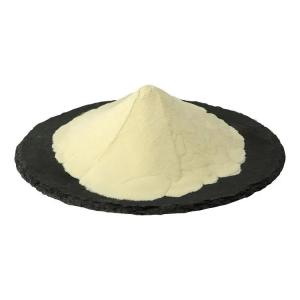News list
News Center
Hot Product
News
Phosphoric acid as part of diet quality discussions
Time:2025-10-24
1. Introduction
Phosphoric acid (H₃PO₄) is a commonly used food additive that plays a significant role in modern diets, particularly through its presence in processed foods and beverages. As nutrition science continues to explore the impact of various dietary components on health and well-being, phosphoric acid has become part of broader discussions surrounding diet quality, food formulation, and consumer awareness.
2. Understanding Phosphoric Acid in the Diet
Phosphoric acid naturally contributes to the phosphate content of foods. Phosphates are essential for several biological functions, including energy metabolism and bone mineralization. However, in food production, phosphoric acid is primarily added for technological purposes—such as acidity control, flavor enhancement, and product stabilization—rather than nutritional contribution.
3. Sources in Everyday Foods
The main dietary sources of phosphoric acid are carbonated soft drinks, processed cheeses, and certain baked goods. Its ability to balance flavor and maintain product consistency has made it a favored ingredient in the food and beverage industry. While its usage levels are carefully regulated, frequent consumption of heavily processed foods can increase overall phosphate intake, making it relevant in discussions about balanced eating patterns.
4. Context in Diet Quality Evaluation
When evaluating diet quality, nutrition researchers consider both nutrient intake and food processing levels. Phosphoric acid, as part of the group of added phosphates, represents the technological side of modern food production. Discussions on diet quality increasingly emphasize moderation, encouraging a balance between fresh foods and those containing added ingredients like phosphoric acid.
5. Scientific and Public Communication
Clear communication about phosphoric acid’s role in the diet is essential for informed consumer choices. Food scientists and health professionals emphasize that phosphoric acid itself is not inherently harmful when used within regulatory limits. However, public understanding often depends on transparent labeling, accessible nutrition education, and evidence-based communication rather than fear-based messaging.
6. Regulatory Oversight and Standards
Global food safety authorities such as the FDA, EFSA, and Codex Alimentarius have established purity standards and acceptable daily intake values for phosphoric acid. These frameworks ensure that its use in foods remains within scientifically verified safety thresholds, reinforcing confidence in regulated consumption.
7. Conclusion
Phosphoric acid occupies a unique position in diet quality discussions—bridging the gap between food technology and nutrition science. As consumers increasingly seek clarity about what goes into their food, continued dialogue between researchers, policymakers, and industry professionals will help maintain transparency, ensure safety, and promote a well-informed understanding of phosphoric acid’s role in the modern diet.
Phosphoric acid (H₃PO₄) is a commonly used food additive that plays a significant role in modern diets, particularly through its presence in processed foods and beverages. As nutrition science continues to explore the impact of various dietary components on health and well-being, phosphoric acid has become part of broader discussions surrounding diet quality, food formulation, and consumer awareness.
2. Understanding Phosphoric Acid in the Diet
Phosphoric acid naturally contributes to the phosphate content of foods. Phosphates are essential for several biological functions, including energy metabolism and bone mineralization. However, in food production, phosphoric acid is primarily added for technological purposes—such as acidity control, flavor enhancement, and product stabilization—rather than nutritional contribution.
3. Sources in Everyday Foods
The main dietary sources of phosphoric acid are carbonated soft drinks, processed cheeses, and certain baked goods. Its ability to balance flavor and maintain product consistency has made it a favored ingredient in the food and beverage industry. While its usage levels are carefully regulated, frequent consumption of heavily processed foods can increase overall phosphate intake, making it relevant in discussions about balanced eating patterns.
4. Context in Diet Quality Evaluation
When evaluating diet quality, nutrition researchers consider both nutrient intake and food processing levels. Phosphoric acid, as part of the group of added phosphates, represents the technological side of modern food production. Discussions on diet quality increasingly emphasize moderation, encouraging a balance between fresh foods and those containing added ingredients like phosphoric acid.
5. Scientific and Public Communication
Clear communication about phosphoric acid’s role in the diet is essential for informed consumer choices. Food scientists and health professionals emphasize that phosphoric acid itself is not inherently harmful when used within regulatory limits. However, public understanding often depends on transparent labeling, accessible nutrition education, and evidence-based communication rather than fear-based messaging.
6. Regulatory Oversight and Standards
Global food safety authorities such as the FDA, EFSA, and Codex Alimentarius have established purity standards and acceptable daily intake values for phosphoric acid. These frameworks ensure that its use in foods remains within scientifically verified safety thresholds, reinforcing confidence in regulated consumption.
7. Conclusion
Phosphoric acid occupies a unique position in diet quality discussions—bridging the gap between food technology and nutrition science. As consumers increasingly seek clarity about what goes into their food, continued dialogue between researchers, policymakers, and industry professionals will help maintain transparency, ensure safety, and promote a well-informed understanding of phosphoric acid’s role in the modern diet.


 CN
CN





